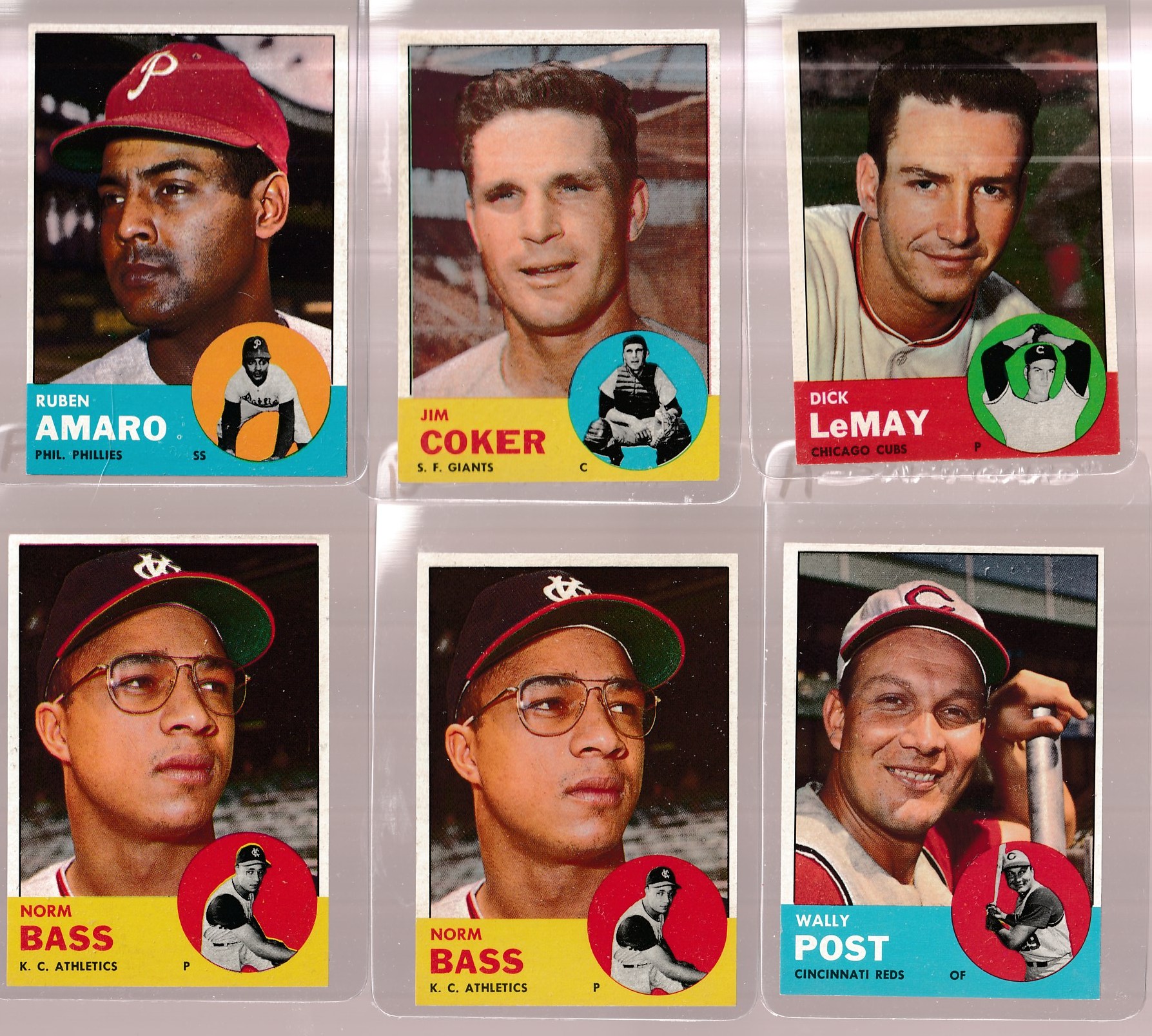1963 Topps #459 Dick LeMay SCARCEST MID SERIES (Cubs)


Please wander around the website for more info, prices, values & images
on vintage baseball, football, basketball, hockey, sport and non-sports cards.
1980's Topps / Donruss & Fleer Top Rookies1980: Rickey Henderson 1981: Tim Raines / Harold Baines / Fernando Valenzuela 1982: Cal Ripken Jr. / Lee Smith 1983: Tony Gwynn / Wade Boggs / Ryne Sandberg 1984: Don Mattingly / Darryl Strawberry 1985: Kirby Puckett / Roger Clemens / Mark McGwire / Dwight Gooden 1986: Fred McGriff / Jose Canseco / Cecil Fielder 1987: Greg Maddux / Barry Bonds / Barry Larkin / Will Clark 1988: Roberto Alomar / Mark Grace / Tom Glavine 1989: Randy Johnson / John Smoltz / Gary Sheffield / Curt Schilling / Craig Biggio |

1972 Topps Baseball Cards |

Starting approximately in 1886, sportscards, mostly baseball cards, were often included with tobacco products, for promotional purposes and also because the card reinforced the packaging and protected cigarettes from damage. These sports cards are referred to as tobacco cards in the baseball card hobby. Over the next few years many different companies produced baseball cards. Tobacco cards soon started to disappear as the American Tobacco Company tried to develop a monopoly by buying out other companies.
They were reintroduced in the 1900s, as American Tobacco came under pressure from antitrust action and Turkish competition. The most famous and most expensive, baseball card is the rare T206 Honus Wagner. The card exists in very limited quantities compared to others of its type because Wagner forced the card to be removed from printing. It is widely (and incorrectly) believed that Wagner did so because he refused to promote tobacco, but the true explanation lies in a dispute over compensation.
Soon other companies also began producing baseball and football cards. Sports magazines such as The Sporting News were early entries to the market. Candy manufacturers soon joined the fray and reflected a shift toward a younger target audience for cards. Caramel companies were particularly active and baseball cards were one of the first prizes to be included in Cracker Jacks. World War I soon suppressed baseball card production.
